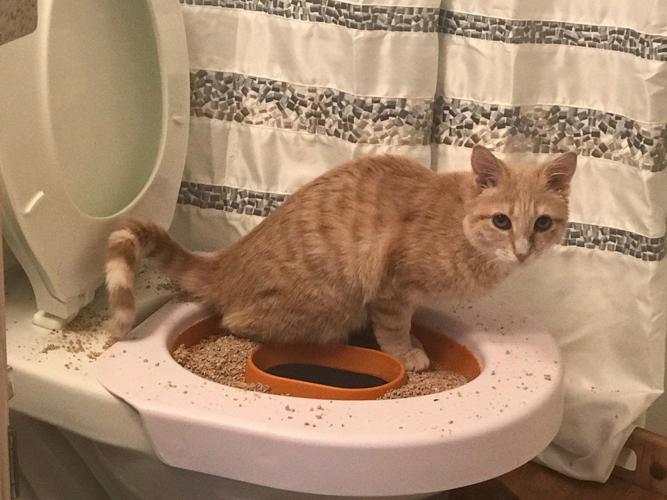This great article which follows about Don’t flush cat feces down the toilet is particularly enlightening. Don't miss it.

Intro
As cat owners, it's essential to be mindful of exactly how we take care of our feline buddies' waste. While it may appear hassle-free to flush cat poop down the commode, this practice can have harmful repercussions for both the atmosphere and human health and wellness.
Ecological Impact
Purging pet cat poop presents unsafe virus and bloodsuckers right into the water system, presenting a considerable risk to aquatic ecosystems. These contaminants can adversely influence marine life and compromise water top quality.
Health and wellness Risks
Along with environmental worries, flushing feline waste can additionally position health risks to people. Pet cat feces may include Toxoplasma gondii, a bloodsucker that can cause toxoplasmosis-- a potentially extreme illness, especially for expecting females and individuals with damaged immune systems.
Alternatives to Flushing
Thankfully, there are much safer and a lot more liable means to dispose of pet cat poop. Take into consideration the following alternatives:
1. Scoop and Dispose in Trash
The most typical technique of taking care of feline poop is to scoop it into a biodegradable bag and throw it in the garbage. Make certain to make use of a dedicated litter inside story and dispose of the waste without delay.
2. Usage Biodegradable Litter
Select naturally degradable pet cat trash made from materials such as corn or wheat. These clutters are environmentally friendly and can be safely taken care of in the garbage.
3. Hide in the Yard
If you have a lawn, think about burying feline waste in a designated location far from vegetable yards and water sources. Make certain to dig deep enough to stop contamination of groundwater.
4. Install a Pet Waste Disposal System
Buy a pet dog garbage disposal system particularly created for cat waste. These systems use enzymes to break down the waste, decreasing smell and ecological impact.
Verdict
Responsible family pet ownership extends past giving food and shelter-- it likewise includes correct waste monitoring. By refraining from flushing feline poop down the commode and going with alternative disposal methods, we can reduce our environmental footprint and safeguard human health and wellness.
CAN I FLUSH MY CAT'S POOP DOWN THE TOILET?
Always avoid flushing cat poop down the drain because not only could it potentially contain harmful parasites called toxoplasmosis, the litter could sit in your line and lead to a clog.
Plenty of waste gets flushed down your toilet every day, so what harm could a little cat poop and cat litter do? The answer is a lot, which is why you never want to send it down your drains.
Can I Flush My Cat's Poop Down The Toilet?One of the biggest problems with flushing your cat’s presents is the harmful parasites in your feline’s stool called toxoplasmosis. Extremely dangerous for humans, especially pregnant women and people who are immunocompromised, these parasites can cause a multitude of problems for unborn babies and even cause death or miscarriage if the infection happens early. That’s why you should always avoid touching cat poop. Also, water systems are not equipped to handle toxoplasmosis and are unable to destroy the parasite before it’s sent back into the environment, potentially jeopardizing the health of local area wildlife, specifically marine life.
Flushing cat poop could also lead to a future drain clog. Try as you may to eliminate any litter from it, there will always still be some stuck on there – and even if it says flushable on the label, it’s not! Cat litter is made up of bentonite clay, which has the tendency to harden when wet, creating a thick, almost cement-like quality. Cat litter that ends up down the drain can expand from the moisture in the pipes and then harden, blocking any wastewater. If you have a septic tank or a cesspool, it cannot handle cat litter either, no matter what kind. If it solidifies in the tank, in any of the system’s major parts like the inlet baffle, it’ll create some expensive problems.
The best way to dispose of cat poop safely is to scoop it into a bag and throw it into the trash – and ways of dealing with the smell include adding baking soda and replacing the box more.
Now that we’ve explained the potential harm that flushing cat poop can cause to you and your drains, you might be wondering the best way of dealing with it. Unfortunately, it’s the old-fashioned way of scooping it into a bag and then placing it into a trash can. They also make pet-proof trash cans that lock in the smell, so that you don’t have to always immediately take it out. If you’re tired of smelling the litter box after even just one use from your feline, there’s things you can do to help combat that smell. Adding baking soda to the litter will reduce smells, but just don’t add too much or your cat will no longer want to use the box. You could also replace the box more frequently, at least once a year, as those smells can just seep inside the scratch marks. Lastly, try changing to a new litter formula – some are better with smells than others.

I'm certainly very occupied with How to Dispose of Cat Poop and Litter Without Plastic Bags and I hope you enjoyed the page. Those who appreciated our blog posting kindly be sure to share it. Thank-you for your time spent reading it.
Get Your Estimate Now
 Taran Noah Smith Then & Now!
Taran Noah Smith Then & Now! Dylan and Cole Sprouse Then & Now!
Dylan and Cole Sprouse Then & Now! Bug Hall Then & Now!
Bug Hall Then & Now! Barbi Benton Then & Now!
Barbi Benton Then & Now! Elisabeth Shue Then & Now!
Elisabeth Shue Then & Now!